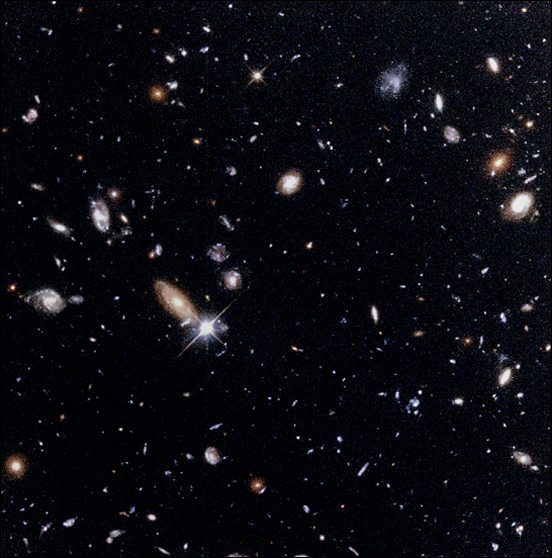

As we all know, telescopes allow us to see things as if they were much closer than they actually are. Most of us have seen paintings of sea captains posed with telescope to eye, and telescopes were widely used by early Europeans in the Southwest. What really catches our attention, though, are the telescopes fixed upon distant objects in the night sky. The number of stars visible to the naked eye is pathetically small, but what about the number seen by powerful telescopes? Estimating what we can't count, for distant galaxies are mere smudges and there's not enough time to finish counting if we could, the figure is about 70 sextillion.
Large numbers are really beyond our ken, but perhaps putting that
number in different ways may help. Seventy sextillion is 70 thousand million million
million, or about 10 times the estimated grains of sand in all the deserts and beaches
on earth. Put yet in a different way, this is a 7 followed by 22 zeros, or in
science-speak, 7 X 10 to the 22nd power. Wow!

Contributor: Arthur H. Harris, Laboratory for Environmental Biology, Centennial Museum, University of Texas at El Paso.
Desert Diary is a joint production of the Centennial Museum and KTEP National Public Radio at the University of Texas at El Paso.

This view shows numerous galaxies; some of the dim red ones date back close to the beginning of time. Counting galaxies within representative regions of space and multiplying by the estimated number of stars per galaxy allows a rough estimate of the total number of stars. Image courtesy of NASA Marshall Space Flight Center.